“Soon there came a moment where the champions could not even trust that which their own eyes beheld. With every step the floor seemed to fall away, crumbling into an unknowable void of swirling madness that left the champions paralysed with fear.”
As I mentioned a few weeks ago, Games Workshop has brought back an old favorite, Warhammer Quest. Subtitled Silver Tower, this new incarnation is a premium product, featuring over 50 miniatures, and some beautifully illustrated, thick card stock, dungeon chamber tiles. It’s a premium product that carries a premium price, retailing at $150.
With excellent board games being produced all the time, there are a lot of places to spend your hard-earned dollars. Should Silver Tower be one of them?
The answer, unhelpfully, is, “It depends.”

Game Components:
The components of the game are all of the highest quality and can’t be faulted. The miniatures are a painter’s dream.
In the box you will find:
- 51 Miniatures including six hero models and two large monsters.
- 2 forty-page rulebooks, the “Guidebook” and the “Adventure Book.”
- 36 Skill cards for your heroes to learn.
- 36 Treasure cards to help you battle way through the Silver Tower.
- 40 Exploration Cards that detail the chambers your heroes explore.
- 6 Character cards that detail everything you need to play your chosen hero.
- 13 double-sided dungeon chamber tiles.
- 26 dice in 6 colors.
- Damage counters and a first player token, the “Runemark.”
- 8 Amulet fragments. Assemble all of these to discover the final secret of the Silver Tower.
Game Overview:
I’ll start by saying what Silver Tower isn’t. This is not an introduction to gaming, play straight out of the box game, like the old Heroquest was. There are 51 minis to put together, and they take some skill. (Note: I invested in some sprue clippers for these. Previously, I had always pooh-poohed them, but after a troubled experience with my Lost Patrol figures, I decided it was a good idea to buy a pair. It was very much worth it. It would be extremely difficult, not to mention time consuming, to cut these sprues using a modelling knife.)
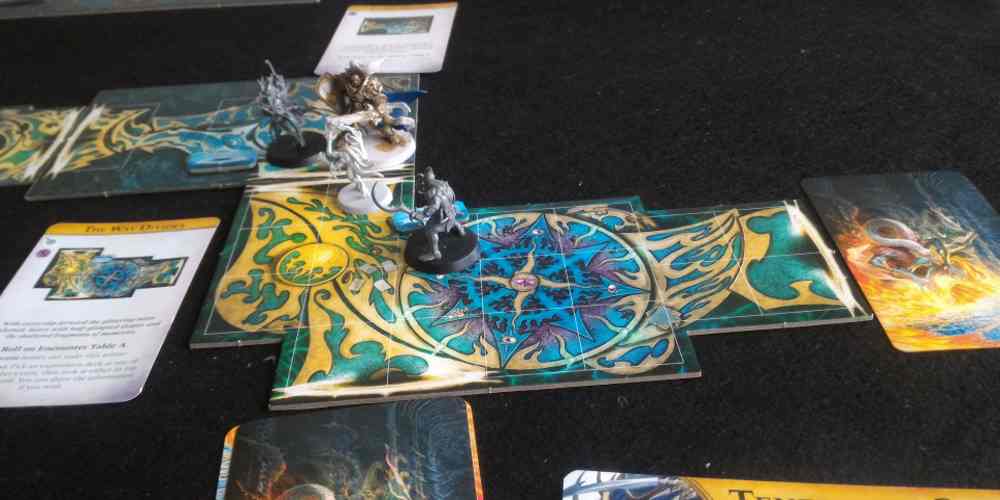
The story premise sees the Silver Tower heroes plucked from their day jobs (beating stuff up), into another dimension, to trawl the passageways of the tower. Once they have finished their quest, they are spat back out from whence they came, and must again await the call of the tower and its maniacal mage, the Gaunt Summoner.
Silver Tower is a dungeon crawl for 1-5 players. It’s your first ever RPG scenario rendered in exquisite 3D. The rules are fairly simple. The basics just take minutes to learn (though as usual, if you’re trying to play with children, I recommend having a brief play-through of a couple of rooms first).
The game consists of rounds, which are broken into the phases. The phases are The Destiny Phase, the Hero Phase, and the Adversary Phase. There is a final End Phase, which does all the housekeeping before the next round.
In the Destiny Phase, the pool of destiny dice is created (more on that in a moment).
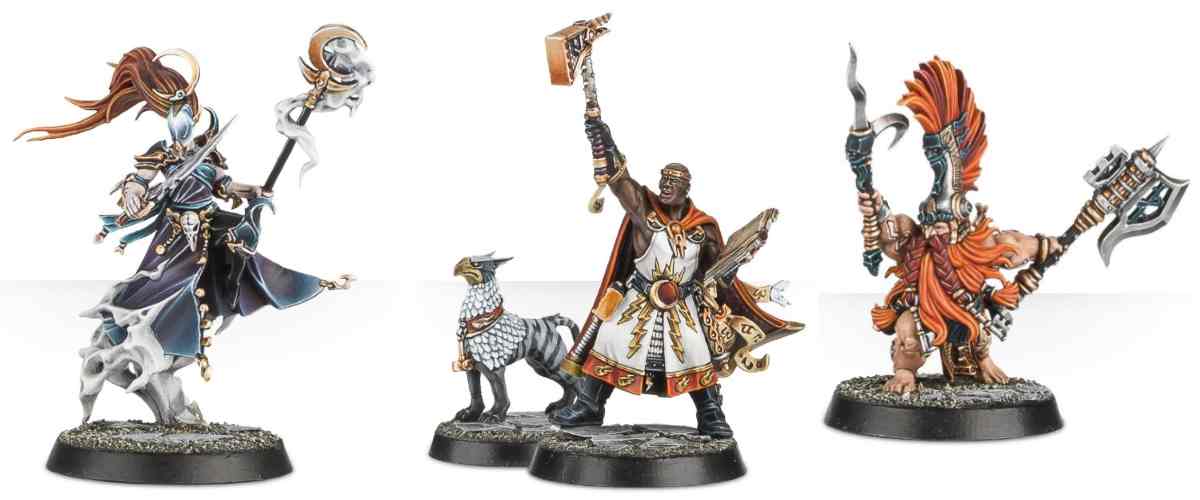
Hero Phase: Each hero has their own turn in the hero phase. Order is decided by the current owner of the Runemark, AKA the first player token.
There are six different hero characters to choose from. These can be assigned randomly, or you can choose. The models for all the figures are great, and they add hugely to the atmosphere of the game. Of the six characters that come with the base game, and the four from the additional “Mighty Heroes” pack, only one of them is female. For 2016, this is pretty poor as regards equal representation.
Each character has its own card, on which are its stats and skills. The central mechanic of the game involves the rolling of four six-sided dice. These are your “action dice.” You roll these at the start of your turn, and place them in the four slots on your character card. The number values shown on the dice determine which actions you can carry out during your turn.
Certain actions require higher die scores than others. So, for example, moving is a 1+ action, i.e., you can always move. To fight, your character normally has two or three options, with the more powerful ones requiring a higher number. When you perform an action, you take the dice off the card and roll it. This makes it easy to keep track of the actions you have used.
If you take damage during the game you lose action dice, and you can very quickly be limited to only one or two actions a turn. This makes things far more difficult tactically; you have to choose carefully which actions to use. Fortunately healing a wound can be done on a 1+ (the first time), so recouping damage isn’t too difficult. If you do lose all four wounds, you can do nothing until the rest of the group are able to force a “respite,” by clearing a room of adversaries. If all characters lose all their wounds, the game is over.
Additional dice can be used from the “destiny pool,” an intriguing mechanic that adds variation to the game. At the beginning of each turn, five destiny dice (D6) are rolled. All non-duplicate dice are kept, and the rest discarded. The dice that remain can be used by the players to carry out extra actions. These can be vital for success. A round with only 1 or 2 destiny dice to use can be very tricky.
The Adversary Phase: Adversaries are added to the board, whenever the heroes explore a new location (using the Explore action—another 1+ action). Assuming they haven’t all been killed thanks to hero actions, after all the heroes have had their turn, the adversaries get to play.
Adversaries behave according to a behavior table, which the runemarked play rolls against at the beginning of the adversary phase. Nearly all the behaviors involve violence towards the heroes—it’s just a question of which of their many attacking options the bad guys use.
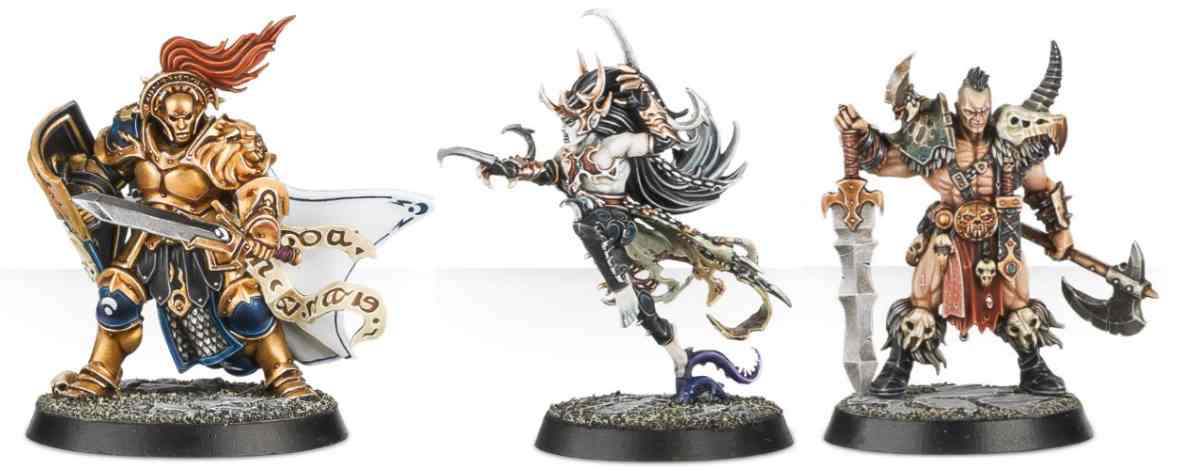
Combat: Unlike previous incarnations of the Games Workshop games I’ve played, combat is worked out over quite a gap in time. Because heroes attack in their phase, and the adversaries fight in theirs, there is no back an forth, trading blow for blow.
Combat is fairly simple, especially against the Silver Tower’s minor denizens. Each character has a number of combat actions they can perform. Which actions a player can use is governed by the numbers on their action dice.
To carry out an action, you roll the relevant dice (taken from your character card) and compare it with stats for that action (also given on the card). This can be counter-intuitive, as the 4+ required to use an action is not the same as the (say) 3+ to successfully perform the action. It’s not a big thing, but a couple of our players stumbled over it a few times.
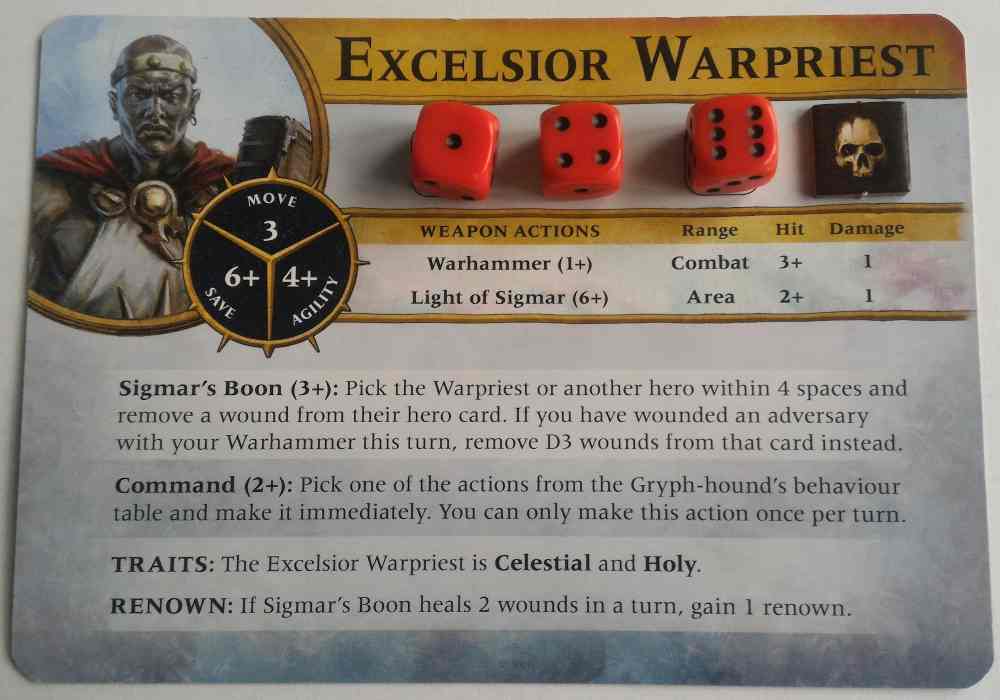
Assuming the attack (action) was successful, damage is taken as given by the stats on the character cards. As you might expect, actions that require a large score to perform tend to be easier to hit with, or do more damage. Adversaries have a “Vigour” score. This is their total number of wounds. If it reaches 0, the monsters die.
All the characters will get to have their turns before the adversaries are allowed to fight back.
When they do, you roll a dice and examine the stat block for the given creature. These are found in the rulebook. If they roll the requisite number, they deal damage to hero they are fighting. Hero characters do get a saving throw, given on their card. If this is successful, damage is reduced or negated.
Whilst the Silver Tower’s cannon fodder have fairly straightforward and easy to deal with behavior, its Champions of Evil have some pretty potent tricks up their sleeves.
Storytelling: So that’s the mechanics of the game, but what about the narrative aspects? The overreaching story arc is that the characters are pulled to the Silver Tower at the capricious whim of the evil Gaunt Summoner. Each time they are called to the tower, the heroes are in search of a shattered amulet. This is broken into the eight pieces. Reforging it will give the characters some great, but as yet undefined, boon.
So it’s clear why the players are there. It’s not quite so obvious why the Gaunt Summoner would invite a bunch of beefed up heroes into his lair in order to assemble the one thing that might do him some serious damage. It’s put down to capricious whim. The plot’s not Game of Thrones, but it’ll do.
Adventures are controlled by the aptly named, “Adventure Book.” This has flavor text and instructions on how to run the game. You also have to consult it whenever “unexpected events” occur.
There are eight themed quests. Each of them use some of the chamber tiles and some of the exploration cards. Each quest sees a deck of rooms (more or less) randomly assembled. This will be the dungeon the heroes will explore, starting with the tiny dungeon porch, the “Ingress Chamber.” After an explore action, characters turn over the top card of the dungeon deck and find the appropriate tile for the room given. You then read the text on the card and carry out any instructions found on the card.
As you progress through the dungeon, you will consult the adventure book from time to time, and snippets of the current quest will be revealed. You may also find items of treasure, and, if you are a particularly effective group of dungeoneers, you may even acquire some new skills.
The dungeon deck is stacked so that the final encounter room will turn up somewhere near the bottom. In this room the characters face an apocalyptic battle. Success will bring them a missing piece of the amulet. Failure will see them leave empty handed. Time to regroup and return to assault the Silver Tower once more.
The Verdict:
I have mixed feelings about Silver Tower. As far its components go, it’s second to none. If you’re a modeler and a painter, there is much to love. The figures included are amazing. The sculpts are some of the finest I’ve seen. They’re not easy to put together, but the instructions are decent, and I only bodged one.
If you like and play Warhammer: Age of Sigmar, then Silver Tower dovetails well with that. It’s easy to introduce your heroes onto the Age of Sigmar table top. Warscrolls for all the heroes (and monsters) are freely available, and treasures and skills found in the Tower port directly over (I believe that’s the case, I haven’t actually done it).
I like this aspect of the game. It enables the building of interesting narrative structures, with characters taking part in both aspects of the game. I gather that the new AoS Generals’s Handbook has new narrative frameworks including something that sounds very like the old Realms of Chaos warband rules, and I can see Silver Tower slotting very nicely into that.
As a stand-alone board game though, Silver Tower doesn’t do very much for me. Some of this may stem from the fact I’m an experienced roleplayer. Many of these collaborative dungeon crawls are just the mechanics of the RPG number grinding, with the character playing taken out. They pale in comparison to the real thing. By the time the original HeroQuest came out, I didn’t see the point of it, and perhaps it’s the same for Silver Tower.
Tactically, the more players you have, the more interesting the game is. The board is more congested, and the order in which you do things matters. There’s also a smaller destiny dice-to-player ratio, for when you desperately need an extra throw. You do have to work together in order to overcome your enemies.

Silver Tower’s designers have gone all out to ensure replayability. The way the dungeon decks are put together, the random nature of adversary deployment, and the use of unexpected events, mean that no two games are ever likely to be the same. The flipside to this is that everything feels arbitrary. There’s no imperative. Everybody is just doing what they are doing because they’re in a game about fighting monsters in a dungeon.
I played Ryan Laukat’s Above and Below last night. Though wildly different in theme and play, both Silver Tower and Above and Below share a dungeon exploration component. The investment I had in the narrative of the characters in Above and Beyond was far greater than I had in my games of Silver Tower.
Where I can see Silver Tower really working is for players new to the hobby. The combat mechanics are simple, fluid, and easily visualized. The straight game might be too much for younger players to play on their own, but working through the game with an adult, it’s fun, and provides a satisfying amount of dice rattling and heroic combat.
The way the adventure cards work, it would be easy to pre-create dungeons. You could then turn Silver Tower into a quasi-RPG, by acting as a Dungeon Master. With a bit of prior thought, it would be easy add monsters and encounters not included in the box, to create a sumptuous 3D dungeon adventure. With this you could imbue greater urgency and a stronger narrative imperative than the adventures that come in the box.
Which brings me back to my original misgivings about the game. It’s beautiful, and a great entry-level game, but who is going to be prepared to spend $150 for an entry level game? I think Silver Tower has the potential to attract newcomers to the hobby, but at that price they’re going to be put off. I don’t think Silver Tower is likely to generate the cult following of its beloved progenitor. This is a shame and feels like an opportunity missed.
If you’re after aesthetics, and something to paint, then go for it. If those are not your thing, then I definitely recommending finding somewhere to have your own play-through before committing your money.
For those not familiar with the wonders of this games predecessor, HeroQuest, below is an eloquent and engaging account of all its best points. This has nothing much to do with my review. It’s just very funny.
Disclaimer: I received a copy of the game for review purposes.



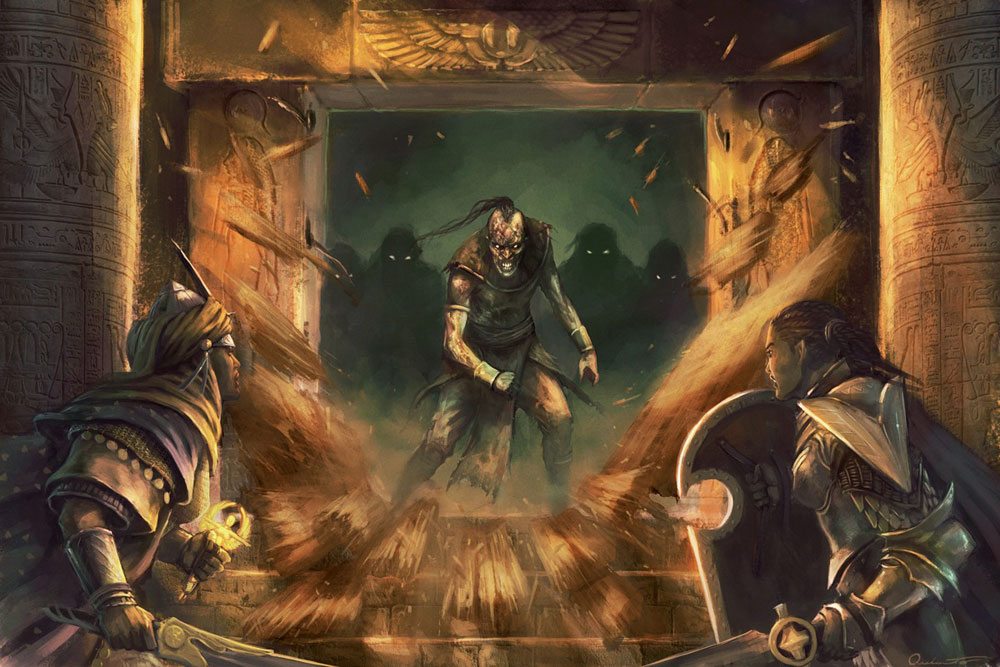

Thanks for this review. I am currently looking for something to take me back to the days of my childhood. Something along the lines of Heroe’s Quest and Dragonstrike. As such, I’ve been thinking about silver tower. It looks great… but there’s something I can’t put my finger on that just doesn’t make it feel like those old classics… perhaps its just nostalgia.
Are there any other games aside from silver tower and similar enough to the aforementioned titles that you have come across and would recommend?